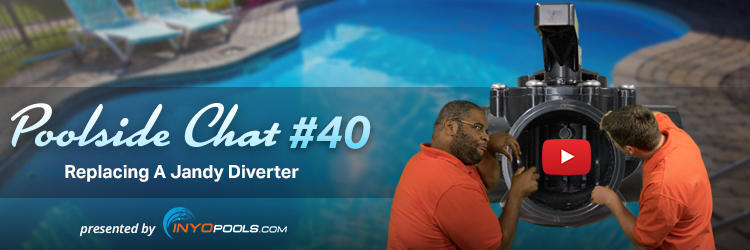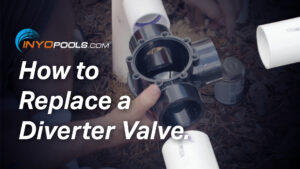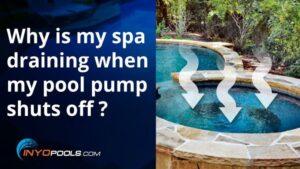- How do I replace the diverter on a Jandy valve?
I’m replacing the diverter in my Jandy three-way valve. Is there a specific way it needs to be reinstalled?
Yes, there is a specific way it needs to be reinstalled. Follow this link to find your Jandy NeverLube and Standard Diverter Valve parts.
First thing, we to determine is where your pump line, skimmer line, and main drain line is feeding into the valve. So let’s say this is your pump line. You’ll want to place opposed from your pump inlet. So the next thing you want to do is replace the cover. And on the cover it says inlet on one of the sides. You’ll want to put the inlet over the port where it’s going to the pump. And then at that point you can reinstall your screws.
So once we have the screws back on next will be reinstalling the handle. You’ll notice the word “off” on the handle. This will be going in the opposite direction on the opposite side of the inlet. So we got inlet down here. We’ll put it in a way that the off is opposite. Then we’ll put the little knob back on. And that’s it.
Once we have the valve back together you’ll notice we have the inlet that is the pump, skimmer, main drain, so when you turn it you’ll notice that you can turn off either the skimmer, or the main drain. And it won’t let you turn off the pump, you wouldn’t want to because then your pump’s going to run dry  and that will burn it up. Very true. Very True. And if this valve is going to be on the pressure side, the inlet is always going to be coming from the filter because you never want to close that off. So that pretty much covers it very good Rob. I think it’s been the most in-depth video ever on a Jandy Valve.
and that will burn it up. Very true. Very True. And if this valve is going to be on the pressure side, the inlet is always going to be coming from the filter because you never want to close that off. So that pretty much covers it very good Rob. I think it’s been the most in-depth video ever on a Jandy Valve.
Thank you for joining us. Feel free to leave a comment down below, or visit our forum. Thank you for joining us. Bye.













Leave a Reply